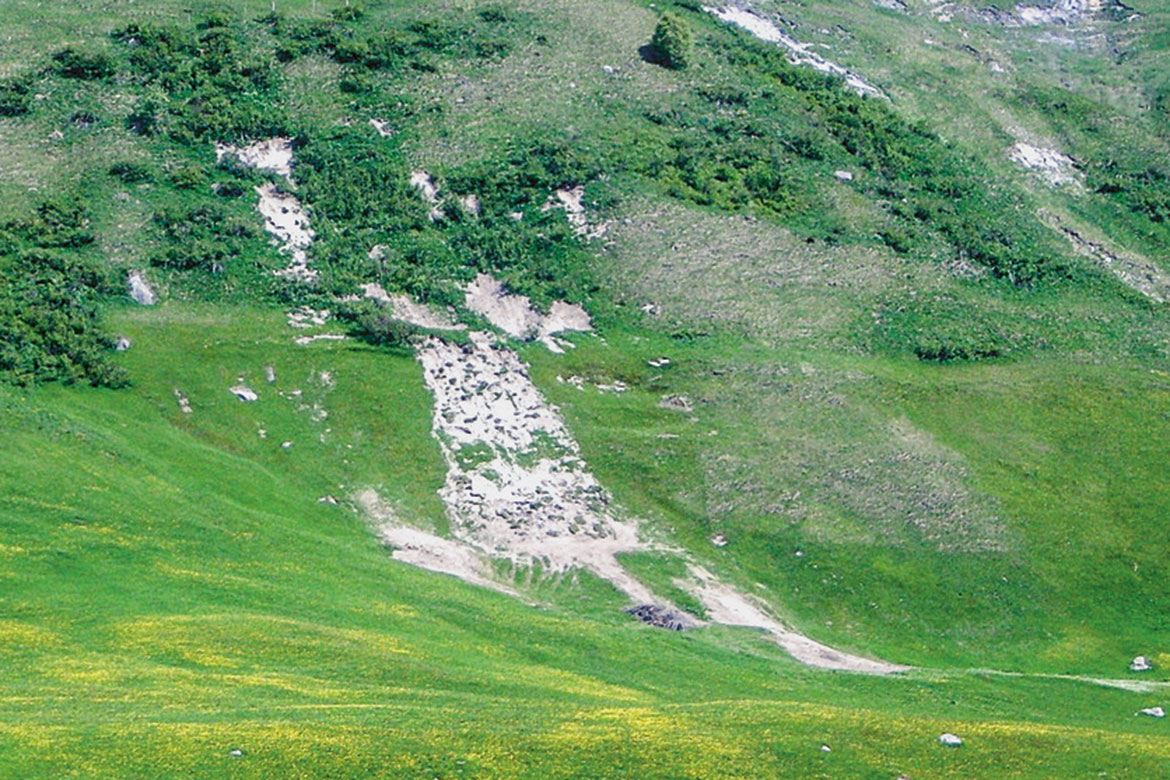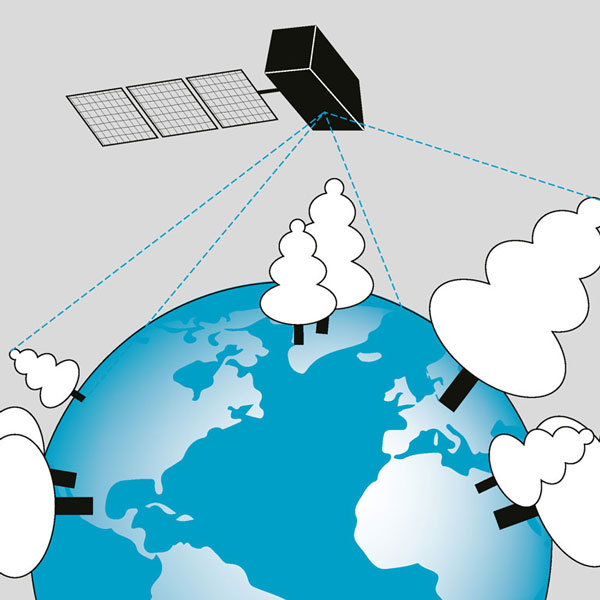An algorithm reveals the destruction of alpine meadows
Alpine meadow landscapes in Switzerland are eroding more and more. Just how quickly this is happening is shown by a study that has analysed erosion in the Urseren Valley over a period of 16 years.

Topsoil erosion and a landslide have damaged this slope in the Urseren Valley. Livestock are the main culprits. | Image: Zweifel et al.
More and more alpine meadows are being destroyed by erosion of their topsoil, and they are losing valuable biodiversity with it. Researchers from the University of Basel have now proven that the erosion is caused by both agricultural use and climate change.
Using aerial photos made by Swisstopo, the Federal Office of Topography, environmental scientists from Basel have been mapping soil erosion that occurred in the Urseren Valley in the canton of Uri from 2000 to 2016. They use a machine-learning algorithm that recognises different types of erosion on the images – such as landslides, run-off of the topsoil, and paths beaten out by animals. In this manner, the researchers have been able to document the chronological development of phenomena such as damage by livestock, and extensive soil erosion.
Soil loss is proceeding at a rapid pace. In the 16 years under observation, the eroded surface area grew by more than 150 percent. Up to an altitude of 1,800 metres, it was primarily cattle that were causing more and more damage. “Today, considerably more cattle are being driven onto meadows near the valleys, independent of weather conditions”, explains Christine Alewell, who is running the study. This is even the case when the earth is moist and therefore less stable. What’s more, the animals are heavier than was the case in the 1970s.
The researchers also see the influence of climate change, especially at a higher altitude than the surfaces under use. More frequent and more extreme rainfall has meant more extensive erosion and more landfalls. There is even a new dynamic to the snow: “When the snow melts several times in the course of a winter, that repeatedly carries material away”, explains Alewell. In this manner, several millimetres of fertile topsoil are lost overall, year after year.



